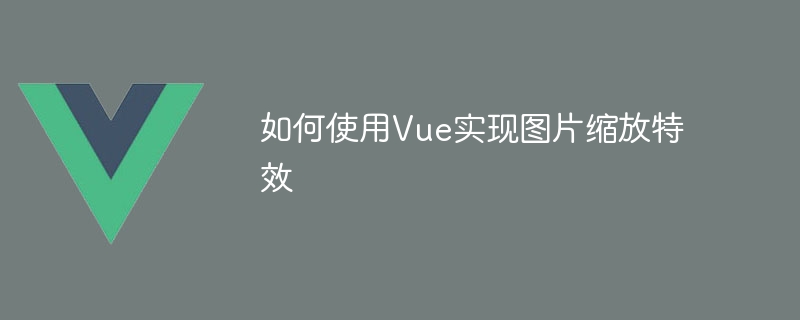

How to use Vue to implement image zoom effects
Introduction:
In modern web design, image zoom effects are one of the most common and attractive effects . This article will introduce how to use the Vue framework to implement image zoom effects and provide specific code examples.
Step 1: Install Vue.js
First, make sure you have Vue.js installed. If it is not installed yet, please use the following command to install it:
npm install vue
Step 2: Create a Vue component
Next, we will create a Vue component for displaying and scaling images. In the template of the Vue component, we use the <img alt="How to use Vue to implement image scaling effects" > tag to display the image, and use CSS styles to control the size and scaling effect of the image.
<template>
<div>
<img :src="imageUrl" : style="max-width:90%" @click="zoomImage" alt="How to use Vue to implement image scaling effects" >
</div>
</template>In the data of the Vue component, we define two attributes: imageUrl is used to store the URL address of the image, imageStyle is used Used to store the image's style, including width and height.
<script>
export default {
data() {
return {
imageUrl: 'https://example.com/image.jpg',
imageStyle: {
width: '200px',
height: '200px'
}
}
},
methods: {
zoomImage() {
// TODO: 实现图片缩放特效
}
}
}
</script>In methods, we define a zoomImage method to implement image zoom effects. Next, we will write the code in this method.
Step 3: Implement image zoom effects
In the zoomImage method, we will use Vue’s animation system to implement image zoom effects. First, we need to import and initialize the animation module in the Vue component. Here, we use the Animate.css library to provide animation effects.
npm install animate.css
<script>
import 'animate.css'
export default {
methods: {
zoomImage() {
this.imageStyle = {
width: '400px',
height: '400px',
animation: 'zoomIn 1s'
}
// 延迟重置图片大小和动画
setTimeout(() => {
this.imageStyle = {
width: '200px',
height: '200px',
animation: ''
}
}, 1000)
}
}
}
</script>In the zoomImage method, we first updated the imageStyle property, set the width and height of the image to 400px, and added a to the image Animation style of zoomIn. Then, we use the setTimeout function to delay 1 second,
reset the width and height of the image to 200px in imageStyle, and set the animation style to empty , thereby resetting the image's size and animation.
Step 4: Use the component in the Vue instance
Finally, we need to use the component we created in the Vue instance. Import and register our component in the Vue instance and use it in the template.
<template>
<div>
<image-zoom></image-zoom>
</div>
</template>
<script>
import ImageZoom from './ImageZoom.vue'
export default {
components: {
ImageZoom
}
}
</script>Here, ImageZoom is the name of the Vue component we created before.
Summary:
Through the above steps, we successfully used the Vue.js framework to implement the image scaling effect. Using Vue's animation system, we can implement a variety of special effects very simply. I hope this article can help you use Vue to achieve the image scaling effects you need.
The above is the detailed content of How to use Vue to implement image scaling effects. For more information, please follow other related articles on the PHP Chinese website!